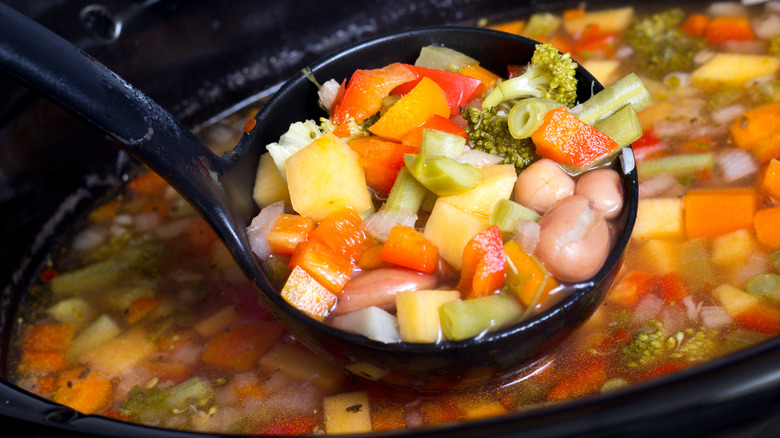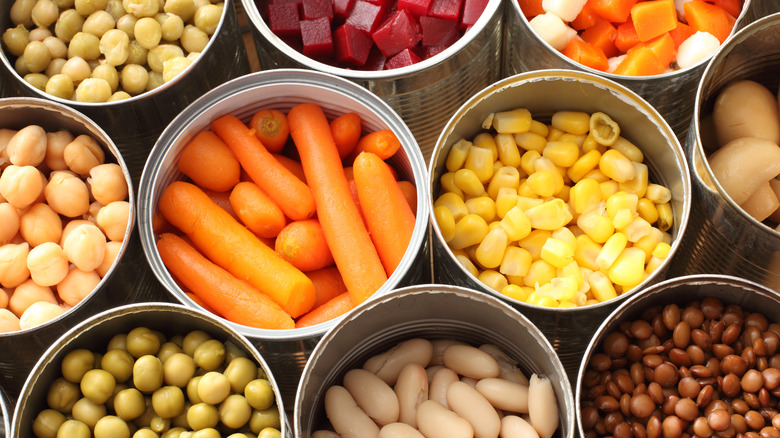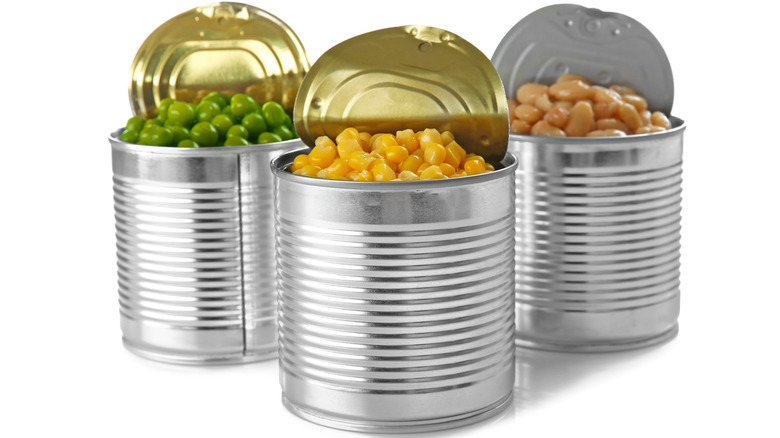The Slow Cooker Rule You Should Always Follow For Canned Veggies
People often have strong and divisive opinions about kitchen appliances. Are air fryers trendy or handy? Are food processors really worth the benchtop space? But people rarely have a negative word to say about the slow cooker, which is the ultimate set-and-forget appliance, next to perhaps the rice cooker.
The slow cooker, true to its name, cooks food slowly between 170 and 280 degrees Fahrenheit for several hours, using a combination of direct heat and steam, which acts as a sort of baster. This is why recipes using slow cookers call for a braising liquid (e.g. stock or wine) to generate steam and incorporate tough cuts of meat (e.g. beef chuck steak or lamb shanks) and hardy, fresh root vegetables (e.g. potatoes or celeriac).
If you're using canned veggies like peas, carrots, corn, mushrooms, or any legumes, they should be added at the final 30 to 60 minutes of the cooking process, so that the vegetables have some bite rather than dissolve into a mush. The one exception to this rule is canned tomatoes, which need to be added at the start, because tomatoes function as a braising liquid rather than as a textural vegetable.
Remember that canned veggies are already cooked
An important point to remember about canned veggies is that they're cooked before they're packaged. This process differs by manufacturer and vegetable, but as a general rule, the vegetables are sliced, packed, and sealed in cans. These cans are then placed in a large cooker and heated to the right temperature to kill any microorganisms, which is what allows the vegetables to retain nutrients and extend their shelf life. This also makes for a great way to economically eat vegetables that are out of season.
Given the canning process, there's no need to further cook the canned veggies. Since slow cookers are designed to cook food for 4 to 6 hours, adding canned veggies at the start means you are simply overcooking the vegetables and they will become an unrecognizable glob. By adding them towards the end, you can maintain their al dente texture, which will be a nice contrast to the soft, braised meat.
Use canned veggies for a contrast in flavors
Another advantage of adding canned veggies toward the end of a slow cook is that the flavors meld with the other ingredients without overpowering the dish. Slow cooking enhances the blending of flavors and aromas, but adding canned veggies too early can cause their taste to dominate the overall dish. By adding them later, you ensure that their flavors are infused into the recipe to provide a balance. Bonus: The colors of the canned veggies remain vibrant and won't dull from overcooking.
Anyone who's ever pushed around mushy peas on their dinner plate as a child should take heed. As adults, we now have the power to cook peas differently, and all it takes is cooking them for a shorter duration compared to the rest of the ingredients. So, the next time you're perusing slow cooker recipes, consider the optimal timing to incorporate fresh vegetables (whether hardy or tender) and canned veggies in order to create a delicious and well-rounded meal.


